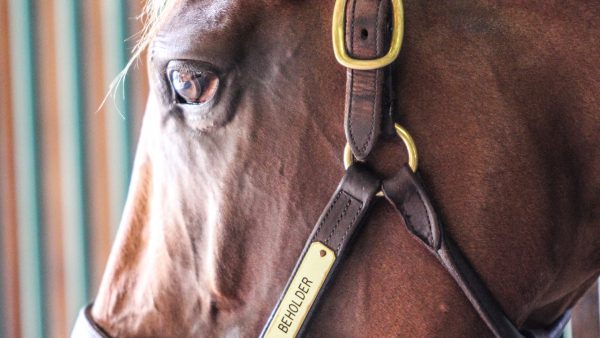by Kelsey Riley (9-minute read)
(AUDIO: Click above to listen to this story as a podcast.)
There were few people more visible in the highest echelons of the sport of horse racing in the 1990s than Bob and Beverly Lewis. The California couple spent large sums at the yearling sales and were rewarded with six champions–including two Kentucky Derby winners–in the span of 10 years. But it is likely they are most remembered for their copious volumes of grace and class.
Bob and Beverly were married for 58 years before Bob’s passing in 2006, and they developed similarly loyal relationships with those they employed in the Thoroughbred industry. In a 2017 TDN story following Beverly’s death, trainer Bob Baffert said, “They may have been the only owners in racing who no one ever minded losing to. They were both so well-liked and such nice people.”
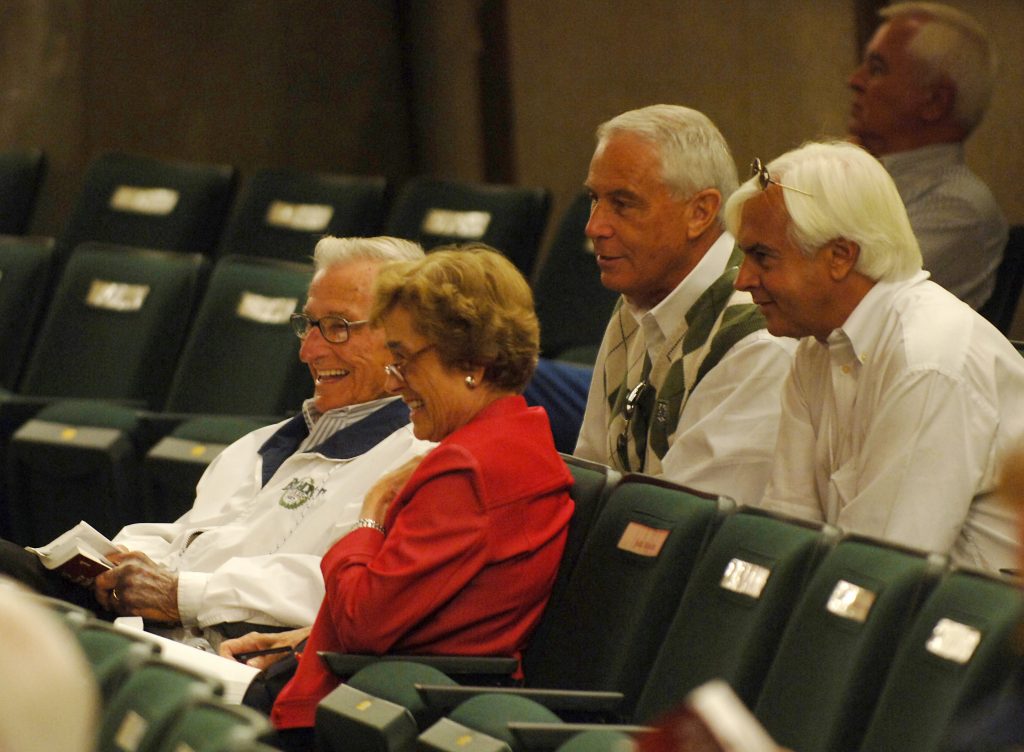
These days, the Lewis stable looks much different. Gone are the days when multi-million dollar colts are knocked down to the Lewises at the yearling sales, and show up in the Classics two years later for trainers like Baffert and D. Wayne Lukas. The main stage is no longer Churchill Downs on the first Saturday in May, or the winner’s circle at the Breeders’ Cup, but rather rolling green pastures in Paris, Kentucky. The supporting cast is a handful of mares and foals dotting the fields of Craig and Holly Bandoroff’s Denali Stud. The star act is the great matriarch Serena’s Song (Rahy). Grace, class and loyalty remain prominent as ever.
‘Bob, I think that one’–that being Serena’s Song–‘fell between the cracks.’ And if there was ever a truthful statement made in the history of horse racing, that had to be among the tops.”
When Bob Lewis died, his son Jeff stepped up to help his mother, Beverly, run the stable. The focus switched from buying expensive colts to preserving the legacy of their Eclipse champion, Hall of Famer and 11-time Grade I winner Serena’s Song, one of the first yearlings purchased for the Lewises by Lukas in 1993.
“My Mom and Dad and Wayne had made a deal with regards to the purchase of yearlings over a three-year period,” Jeff Lewis recalled while visiting Serena’s Song at Denali Stud in June. “My Dad committed some significant capital to that effort. The very first horse that Wayne selected for Mom and Dad at the Keeneland July sale was this filly by Rahy. She wasn’t inexpensive, but she was quite reasonable [for $150,000]. Wayne turned to my Dad when the hammer went down and said to him, ‘Bob, I think that one’–that being Serena’s Song–‘fell between the cracks.’ And if there was ever a truthful statement made in the history of horse racing, that had to be among the tops.”
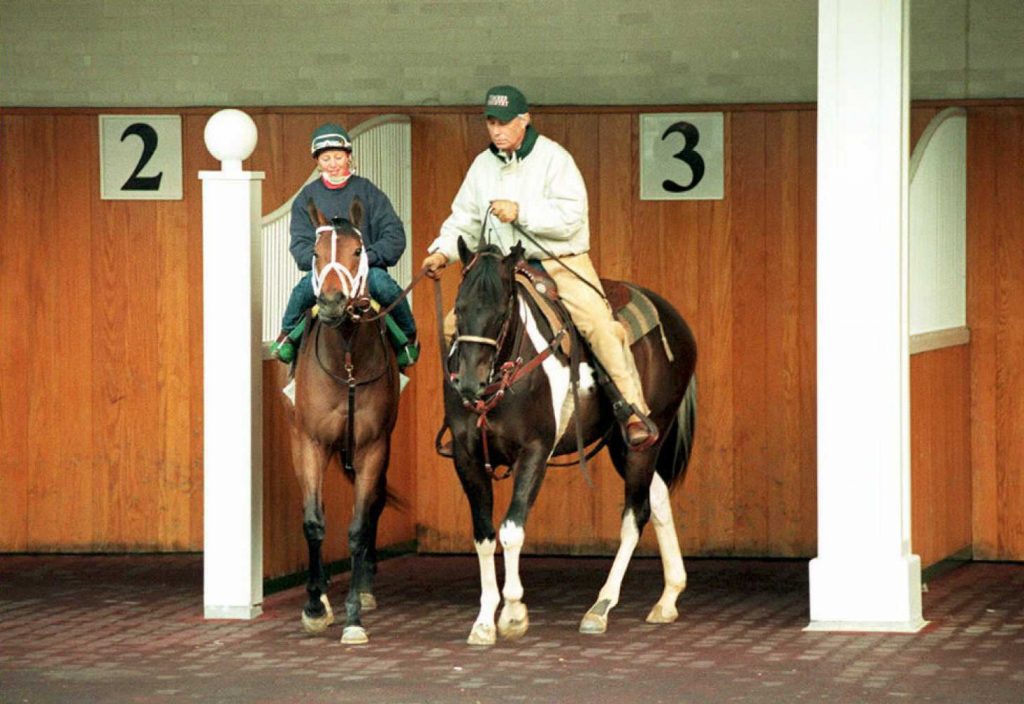
Serena’s Song proved Lukas’s premonition correct. She won the GI Oak Leaf S. and GII Landaluce S. at two before missing out to stablemate Flanders (Seeking the Gold) in a head bob in a historic renewal of the GI Breeders’ Cup Juvenile Fillies in 1994. Serena bounced right back to win her next five starts, including the GI Las Virgenes S., the GI Santa Anita Oaks and the GII Jim Beam S. over the colts. She faded after leading for the first mile in the 1995 GI Kentucky Derby but redeemed herself to add the GII Black-Eyed Susan S. and Grade I Mother Goose, Haskell Invitational, Gazelle and Beldame S. during a remarkable 13-race sophomore campaign which culminated in an Eclipse trophy for champion 3-year-old filly. She posted a further 15 starts at four for Lukas, winning the Grade I Santa Monica and Santa Maria Handicaps and the GI Hempstead H. She retired as the richest mare in North American racing history with $3.28-million gleaned from 18 wins from 38 starts, and in 2002 was inducted into racing’s Hall of Fame. Serena’s Song was pensioned from breeding in 2014 and now aged 27 is enjoying her retirement at Denali Stud, where three of her daughters and one of her granddaughters are in the early stages of their own breeding careers.
Serena’s Song was one of the trailblazers in a golden era for the Lewises when they campaigned six champions in a span of a decade including Kentucky Derby winners Silver Charm (Silver Buck) and Charismatic (Summer Squall), sprint champion Orientate (Mt. Livermore) and 2-year-old champions Timber Country (Woodman) and Folklore (Tiznow). Jeff Lewis admits that after his father’s passing he and his mother didn’t think they could keep pace with those accomplishments, and thus went a new direction with the stable.

“The difficulty of matching or even coming close to what my father accomplished in the Classics, with horses like Silver Charm and Charismatic, was something that could not ever conceivably, in my opinion, be rivaled,” Lewis explained. “But we had Serena, and the ability to sell her product and the revenue that has been generated over the years by Serena’s foals and yearlings has been extraordinary.”
While some of Serena’s Song’s early progeny were sold, and colts out of her daughters go through the sales ring today, it is emphasized now that neither Serena nor any of her remaining daughters will ever be sold. That decision dates back to an ultimatum made by Beverly Lewis near the beginning of Serena’s breeding career.
“Early in her career, Bob had said he was going to sell her,” Craig Bandoroff recalled. “Not that I was some genius, but I just didn’t want him to do it. I just had this feeling about her. For her to do what she did as a racehorse, she had the ability, she had the genetic blood being by Rahy and the family. I said to him, ‘I’m going to come to California, let’s talk about this.’ He said, ‘You can come, but that’s what we’re going to do.’ I said, ‘Okay, well, if you’ll pick me up at the airport, I’m coming.” I had prepared this report for him on all of the reasons not to sell her.
“I walked out of John Wayne Airport and Bob was sitting there. I got in the car and he looked at me and said, ‘Craig, we’re not going to sell her. Beverly won’t let me sell her. Let’s go get a Whataburger. Just don’t tell Beverly where we’re going to lunch.’ I said, ‘Your secret is good with me, Bob.’”
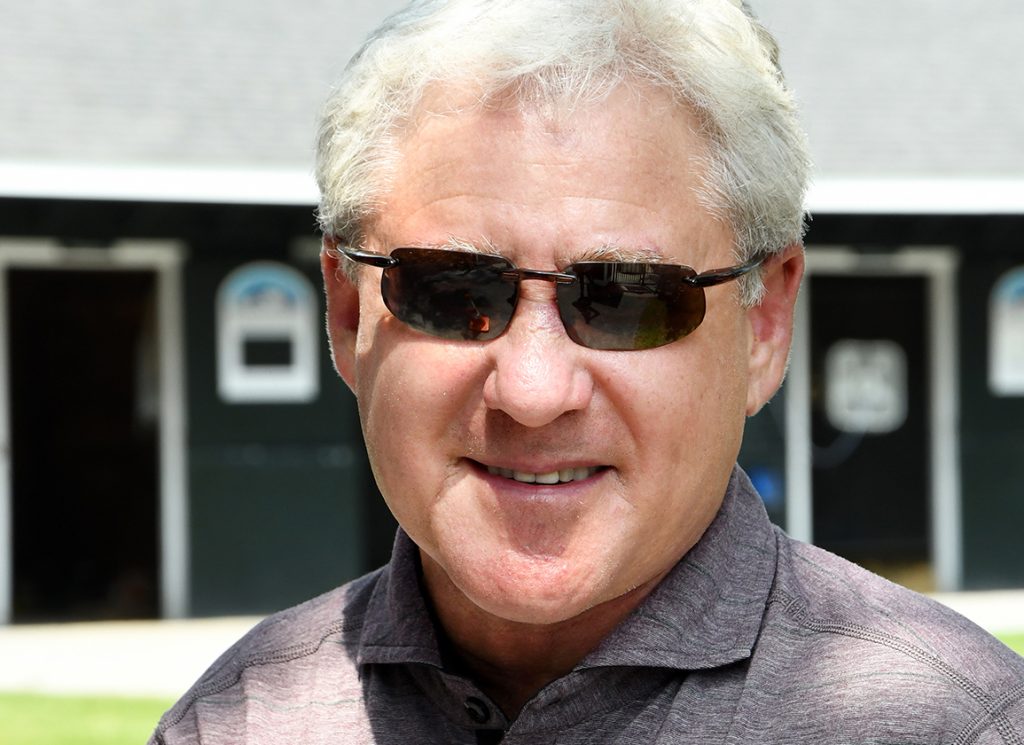
Bob Lewis’s inclination to sell Serena’s Song was borne not from disrespect toward the mare, but for the fact that his interests were strongly rooted in the racing–not the breeding–game. Indeed, Lewis sold Serena’s Song’s first two foals, the fillies Serena’s Tune (Mr. Prospector) and Sophisticat (Storm Cat), for $1-million and $3.4-million, respectively. Both of those went on to be notable producers: Serena’s Tune is the dam of Jim Bolger’s Group 3 winner and useful sire Vocalised (Vindication) and the second dam of champion and young sire Honor Code (A.P. Indy), as well as stakes winners Noble Tune (Unbridled’s Song) and Declarationofpeace (War Front). The Sophisticat line continues to provide updates, too; she is the second dam of Suphala (Fr) (Frankel), a €650,000 yearling and winner of the G3 Prix Chloe and the listed Prix Volterra in June.
“If I could get anything back in the Serena history, it would be a couple of those daughters that we let get away,” Bandoroff said. “But Bob wasn’t a breeder. He was a racer and he wasn’t that interested in the breeding business. As a matter of fact, we sold several of his mares for a lot of money at the top of the market. He wanted to take those funds and put them back in and see if he could win the Kentucky Derby again.”
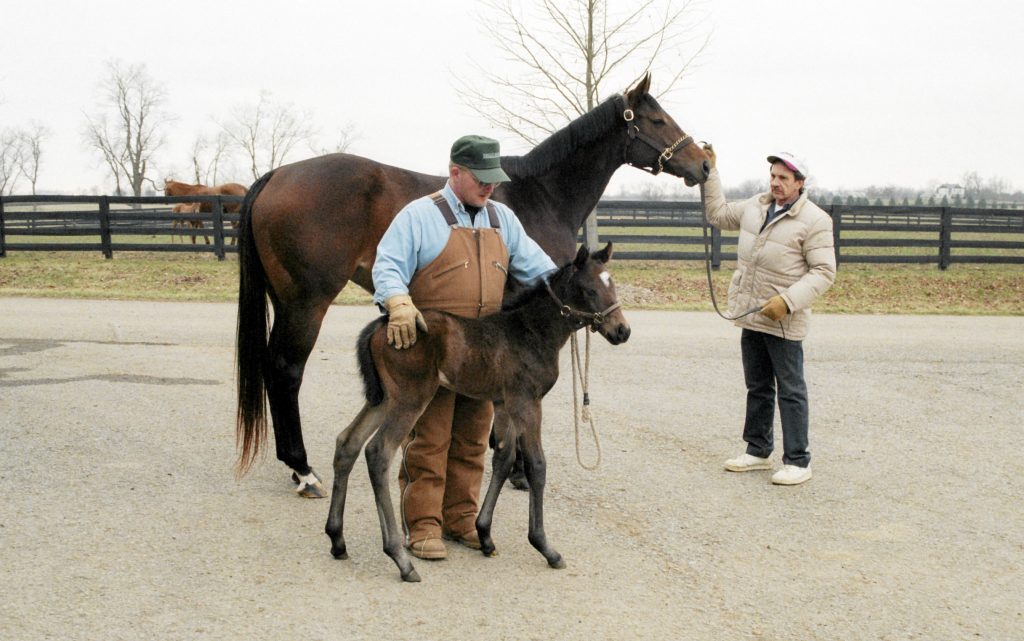
Serena’s Song produced six more foals up to the year of Bob Lewis’s death: five colts, including graded winners and sires Grand Reward (Storm Cat), Harlington (Unbridled) and Schramsberg (Storm Cat), and one filly, Pure Symmetry (Storm Cat), who was retained. In perhaps a stroke of divine intervention, however, Serena’s Song produced three consecutive fillies to wind down her breeding career after Bob Lewis passed: Night and Day (Unbridled’s Song), the dam of GII With Anticipation S. and GIII Dania Beach S. winner Made You Look (More Than Ready); stakes winner Serene Melody (Street Cry {Ire}) and Gold Serenade (Medaglia d’Oro), who this year produced her first foal, a colt by Pioneerof the Nile. Those three mares, along with Serena’s Song granddaughter Miner’s Cat (Mineshaft), who is out of the aforementioned Pure Symmetry, are all permanent members of the Lewis broodmare band. Perhaps, in a way, Bandoroff and Lewis have been given a chance to rewrite history.
“Almost unbelievably, the last three foals that Serena had were fillies,” Lewis said. “I spoke to my mother with the arrival of each one and urged her–with no resistance at all–to retain these.”
“We’re extremely grateful for that decision,” Bandoroff said. “We followed that adage, breeding the best to the best, and she’s been a genetic gem. I’ve had a lot of wonderful moments in my career, but I’m not sure I’ve ever been prouder than when Bob mentioned me at Serena’s Hall of Fame induction and credited me with playing a role in developing her as a broodmare. But listen, it’s all her. We didn’t have any magic sauce or any secret recipe.”
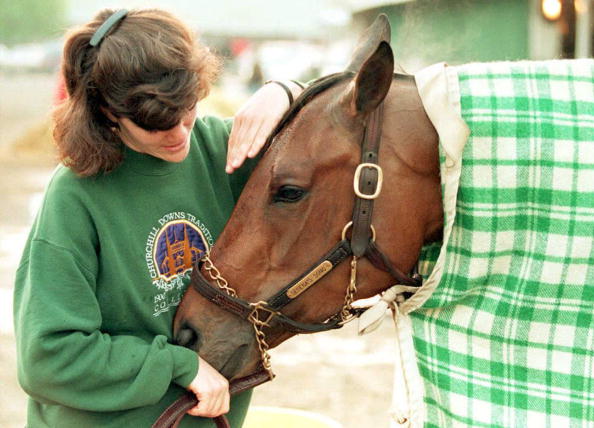
In the midst of developing Serena’s Song’s family legacy, the Lewises and Bandoroffs created one of their own.
“I first met Bob and Beverly at a TOBA seminar that Holly and I were hosting a part of,” Bandoroff recalled. “Bob and Beverly were just such wonderful persons that we struck up an acquaintance and a friendship.”
“We’ve been fortunate to have had numerous people in our lives and in our careers that have made a big impact and had a big influence, but Bob and Beverly were very special. Holly and I were young and I think they saw something in us that reminded them of themselves. I don’t want to shortchange other people that gave us wonderful opportunities, but I can tell you, I have a picture of Bob in my office near my father. They made a big difference. They were special people and he had confidence in us before people knew who we were, really.”
The bond between the Bandoroffs and the Lewises has been growing 30 years and counting. With Jeff Lewis keen to push on and Craig and Holly’s son Conrad taking on an expanded role on the farm, it looks only to continue.
“I think it’s unusual in any business to have a relationship that pushes 30 years,” Bandoroff said. “We’ve been with this family for 30 years and, again, I’m as proud of that as anything and feel very, very fortunate.”
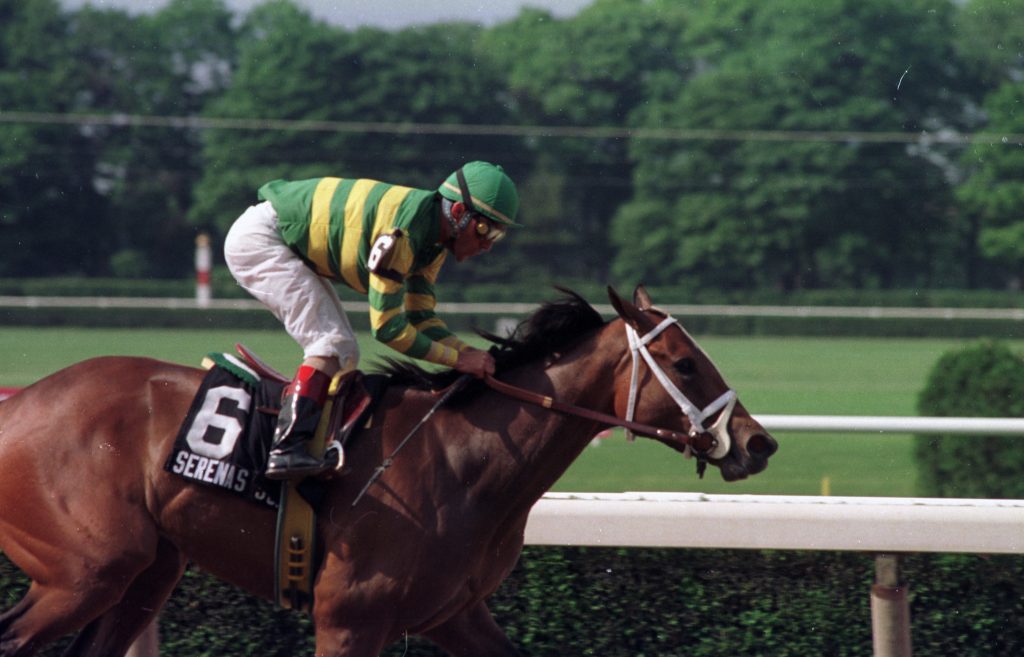
Serena’s Song isn’t the only one of their own that the Lewises have made a long-term commitment to. In 2014 they footed the bill to repatriate Silver Charm from Japan, and a similar gesture was made when the late Charismatic also returned home from Japan in 2016.
“Every time I’m in town we go out to Old Friends and see Silver Charm,” Lewis said. “We enjoy seeing Michael Blowen, and the work that he’s done out at Old Friends is just spectacular. We take great pride in supporting Silver Charm out there.”
The second great chapter of Serena’s Song’s life came to a close in 2015 when she was retired from broodmare duties. She produced 13 foals, including six stakes winners, and her progeny have fetched a total of $12.97-million in the sales ring.
“We followed that adage, breeding the best to the best, and she’s been a genetic gem.”
“We let her be a horse,” said farm manager Gary Bush about Serena’s retirement routine. “She stays outside almost 24 hours a day. She’ll come up, get a bite to eat, she gets curried and gets groomed. If it’s hot, we’ll leave her up a few hours out of the heat, then let her go back outside. In the winter time, she has a blanket that she wears outside at night when it’s cold.”
Bush said Serena’s Song still knows her place in the pecking order. “She’s always been tough, but honest,” he said. “She’s not mean, but she will let you know, ‘I’m the boss.’ And she’ll pin her ears back and she’ll take a little nip at you. And you know that, and so she’s honest.”
The epilogue to Serena’s Song’s story continues to be written. To date she has 21 black-type descendants and counting. Her three daughters at Denali each produced colts this year, by Into Mischief, War Front and Pioneerof the Nile. The Lewises and Bandoroffs remain generous in sharing Serena’s mystique with her fans and as a means to aid charitable efforts.
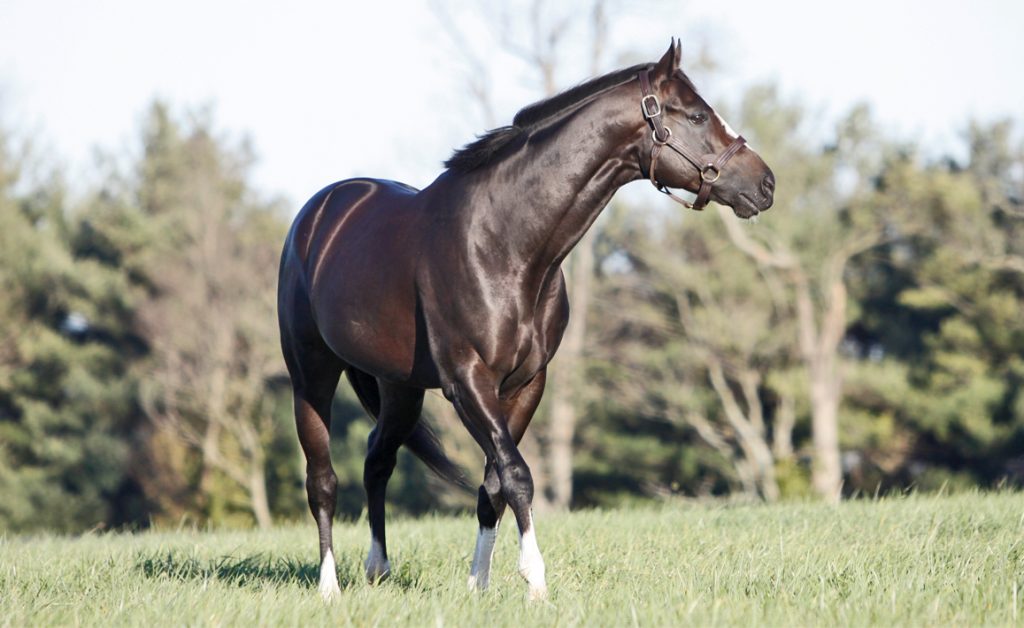
“I don’t think there’s a horse in Kentucky that has had more halters made than Serena’s Song,” Bandoroff said. “We still give eight or 10 halters a year to charity, and they still bring $2,000 to $3,000.
“She gets fans here, too. Earlier this spring, there was a woman that came that literally broke down into tears. She just couldn’t thank me enough for letting her come.
“She’s still an icon and I think she’s meant a lot of things to a lot of people, probably a lot of things that we don’t even know about. Horses have an amazing connection with people, and when you have one like her, you always hope you’ll have another.”


